
© Werner Kmetitsch. (Click image for larger version)
James Wilton Dance
Last Man Standing
The Place
6 May 2015
www.jameswiltondance.org.uk
www.theplace.org.uk
Some choreographers present quite grandiose essays in their programme notes about the ostensible underlying concepts or subjects of their work. This can sometimes leave the viewer scratching their head a little, wondering if they really managed to latch on to any of it. James Wilton’s description of Last Man Standing is agreeably terse. It states that it draws its subject from Terry Pratchett’s book The Last Hero and the myth of Orpheus and Eurydice. Even more cheeringly, you can actually see the myth reflected in the dance that we see on stage. (I will pass on the Pratchett, which I don’t know, but the Orpheus element, the fragility of life, death of the loved one and yearning for the lost are all there.)
Loud guitar music, whispering soundscapes, dance influences that include breakdance and martial arts alongside contemporary movement may sound like an unlikely mix to support a full length piece that supplies an identifiable narrative. But this is all melded together effectively. It’s an organised, disciplined piece, tightly structured with the individual dancers each characterised by their own distinctive movement vocabulary.
It begins with two dancers, a woman in white, tense, gazing downward, fragile but intense. This Eurydice figure is supported and propped up by her partner who becomes our Orpheus. She falls time after time. They are joined by the rest of the cast of six. One of these is a man in black, a controlling, somewhat sinister figure with a very distinctive swinging movement of the arms, like the pendulum of a clock, making time slow up or down. You might choose to view the rest of the cast as the forces of chaos he controls.
The movement can have softer and tenderer moments, but for the most part is fast, energetic, and furious. Wilton loves the floor: his dancers roll, slither and slide. They only jump in order to enjoy the force that slams them back down into the floor again. It’s as if the earth emits some primal pull more profound even than gravity that they respond to. In the intimate surroundings of The Place you can feel the floor reverberate as they slam into it.
Wilton deploys the cast variously in solos, duet and trios, leaping over, under and around each other, with little distinction made between the sexes. They all hurl themselves spinning through the air, land, roll, and jump again. Most of his movement is on a large scale but there are moments when very small movements register successfully, for example the tiny fluttering of the fingers as Eurydice revives. But at times the gestures are too small scale to register. She sometimes draws a figure on the floor with one finger, but it’s impossible to discern what this might be.
In the legend, Orpheus lost his much loved wife and was so bereaved he journeyed to the underworld to retrieve her from death, and was allowed to take her back, provided he could return all the way without looking back at her. But ultimately he could not resist a glance and so failed. The end of the first part leaves us with the Eurydice figure separated at last from her partner by death, sprawled face down on the ground. At the beginning of the second half, in the section entitled the river Styx, we find her there still. Her partner pursues her through a stylised combat with the death figure in black. Ultimately she revives, rediscovering her body bit by bit as if legs and feet had become wholly unfamiliar. The ending is ambiguous without clear resolution.
James Wilton began making dances while a student at London Contemporary Dance School, from where he graduated in 20009. Last Man Standing is an ambitious and confident work. It has a rich and energetic vocabulary allied to a strong sense of structure and an unusual interest in narrative.












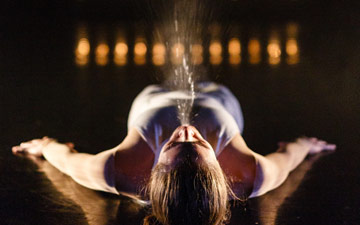
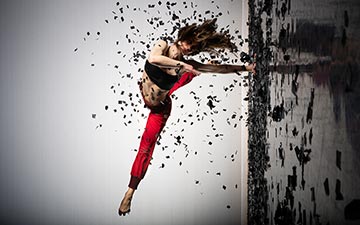
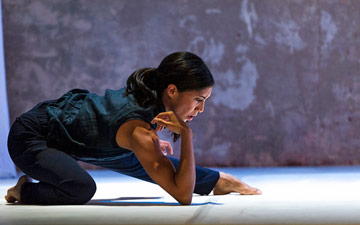
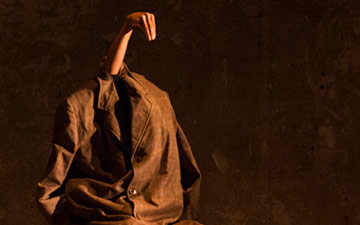
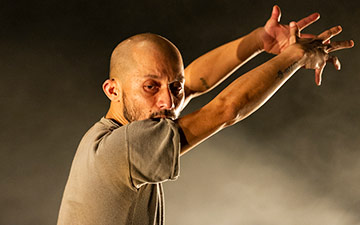
You must be logged in to post a comment.